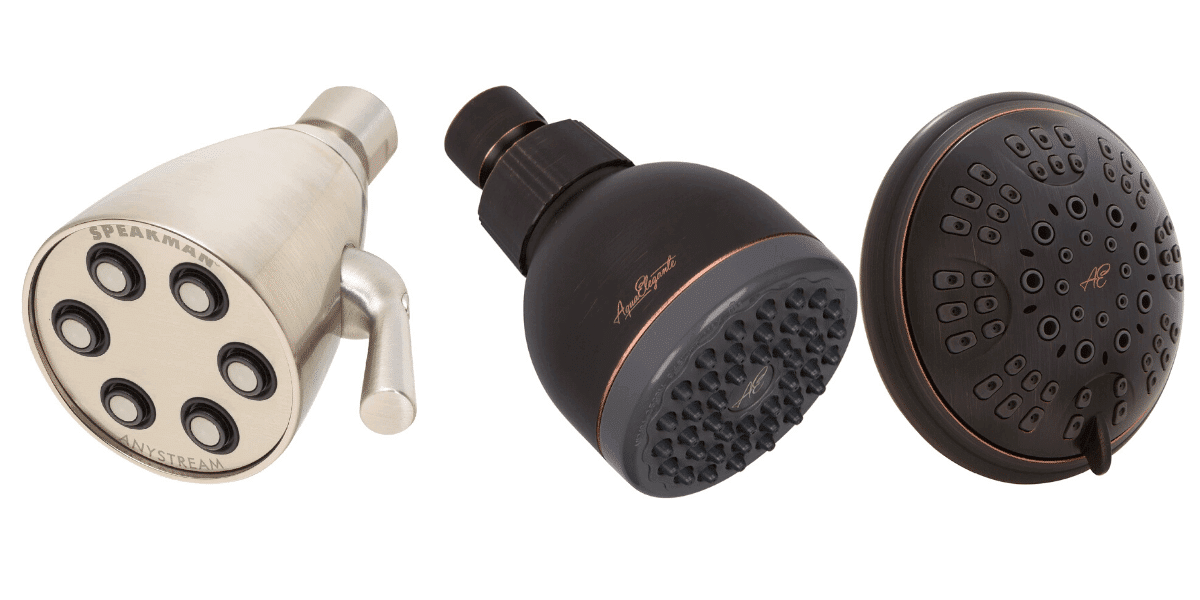How Do Water Saving Shower Heads Work?

If you’re living in a state like California, water-saving is probably on the top of your priorities, while many of us just want to be more conscious of our environment and pockets and save as much water and money as possible. You have likely read or seen a water-saving shower head, but you’re probably asking “how do water saving shower heads work?”, or if water-saving shower heads work at all. I’d be answering those two questions in this article.
Looking for a shower head that can increase water pressure instead? Here are some great options.
What Are Water Saving Shower Heads?
Water-saving shower heads are designed to reduce water wastages, making your home more energy and water-efficient. So let’s say you took a bath in a shower without a water-saving shower head; at around 9 GPM you will be using up a lot more water every minute you spend in the bathroom than you would if you had a 2.5GPM water-saving shower head installed. So even if you spend 5 minutes in the shower, you will only have used around 10 gallons. While without a water-saving option, you would have used 45 gallons if you stayed in the bath for the same 5 minutes.
Water-saving shower heads basically give you the same high water pressure while reducing the water poured out every minute.
Another thing that water-efficient shower heads do is to reduce the amount you spend on water heating. According to reports, water heating takes up the second largest chunk of the energy expenses in the average home, so shower heads also save you a lot in that regard. You use hot water for things like dishwashers and washing machines, and while you can easily make adjustments in those areas, hot water is one thing you’d likely not plan to take out of your shower budget. To keep costs low, save more water, save more on your bills, a shower head that will save water becomes a necessity.
How Do Water Saving Shower Heads Work?
Water-saving shower heads will restrict the volume of water that is allowed to flow through them. So even if your plumbing system sends a lot more water to you, the shower heads throttle this and release a maximum of 2.5GPM based on new government regulations. That is the maximum most shower heads give, although many shower heads come with a water flow resistor that allows you to throttle the flow and go as low as 1.5GPM in some cases.
Do Water Saving Shower Heads Work?
Well, yes, water-saving shower heads work; in fact, newer models can reduce the volume of water by half of what you used to get. But it only works when your shower doesn’t already have very low pressure, or if you already have an electric shower. So you will have to consider your setup and your plumbing system before you decide on getting a water-efficient shower head.
Things to Consider When Choosing a Low Flow Water Saving Shower Head
If you ever decide on getting a low flow shower head, here are a few things to check before deciding to or not to buy one.
Flow Rate
Government regulations state that the max flow rate should be 2.5GPM. Most shower heads that have water-saving features will indicate the flow rate either on their packaging if you’re getting them at the local stores or on their product descriptions if you’re getting them online, like on Amazon.
Aerating, Non-Aerating or Laminar flow shower heads
Aerating shower heads will mix the restricted flow of water with air, so it will appear that the water coming out of the shower head is in a higher volume, like a normal shower, providing an even softer showering experience.
Non-Aerating shower heads will restrict the flow of the water, squeezing it through small holes, so while you will be getting more pressure, the water will hit harder, and it feels like you’re getting a massage shower.
Laminar flow is best if you are in a high-humidity environment. They would separate the water into individual streams, creating less steam and moisture than you would get if you are using Aerated shower heads.
Does it have a flow resistor?
A flow resistor allows you allows you to adjust the water that is allowed through the lines as you see fit. Many states have a regulation that limits the amount of GPMs that comes out of the shower heads, so manufacturers put a resistor to limit this. If a shower head gives you 1.8GPM after it has been restricted, some manufacturers give you an easy-to-follow guide that lets you take out the resistor to get the maximum 2.5GPM.
Here are the best water efficient shower heads reviews.
